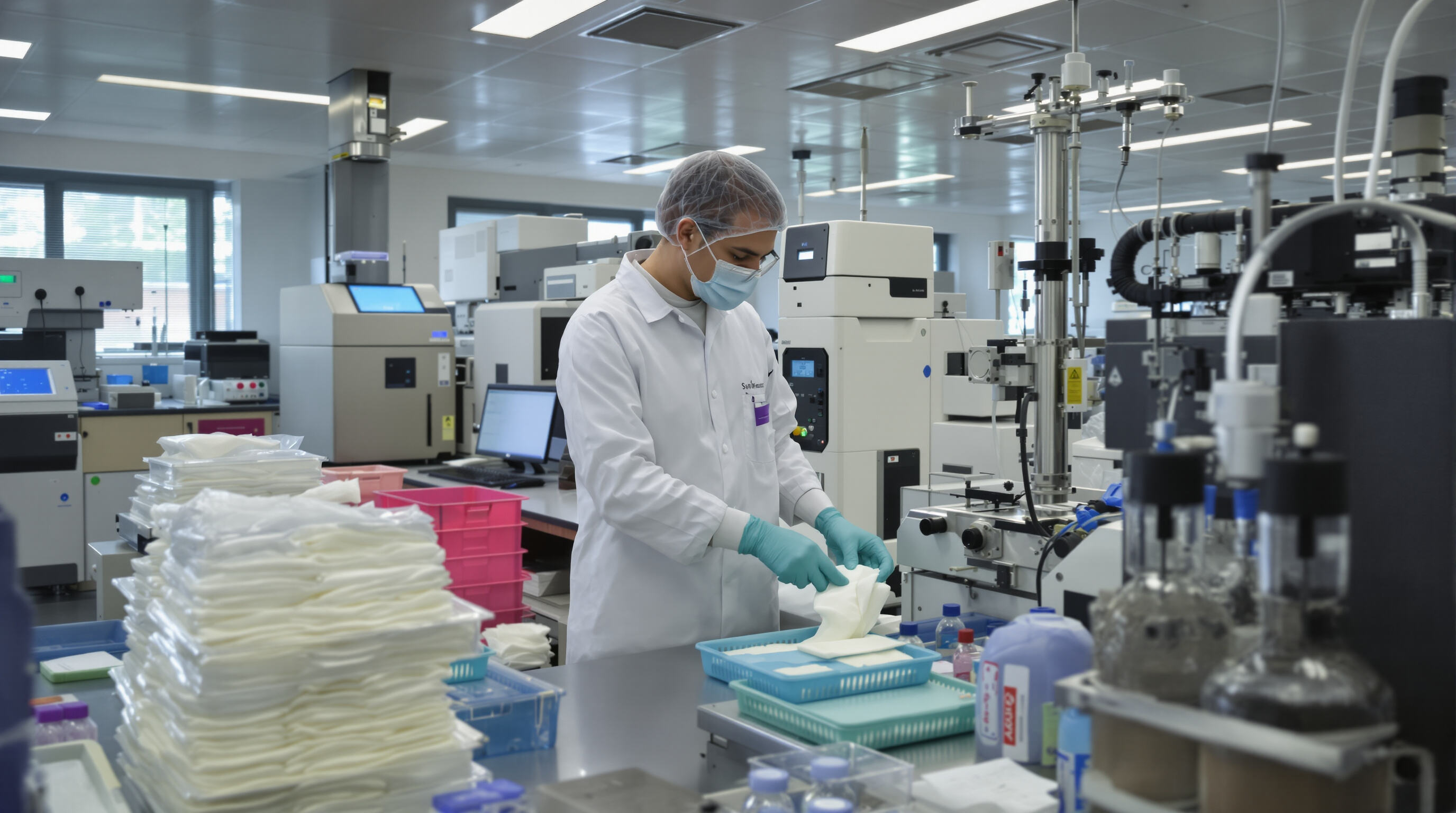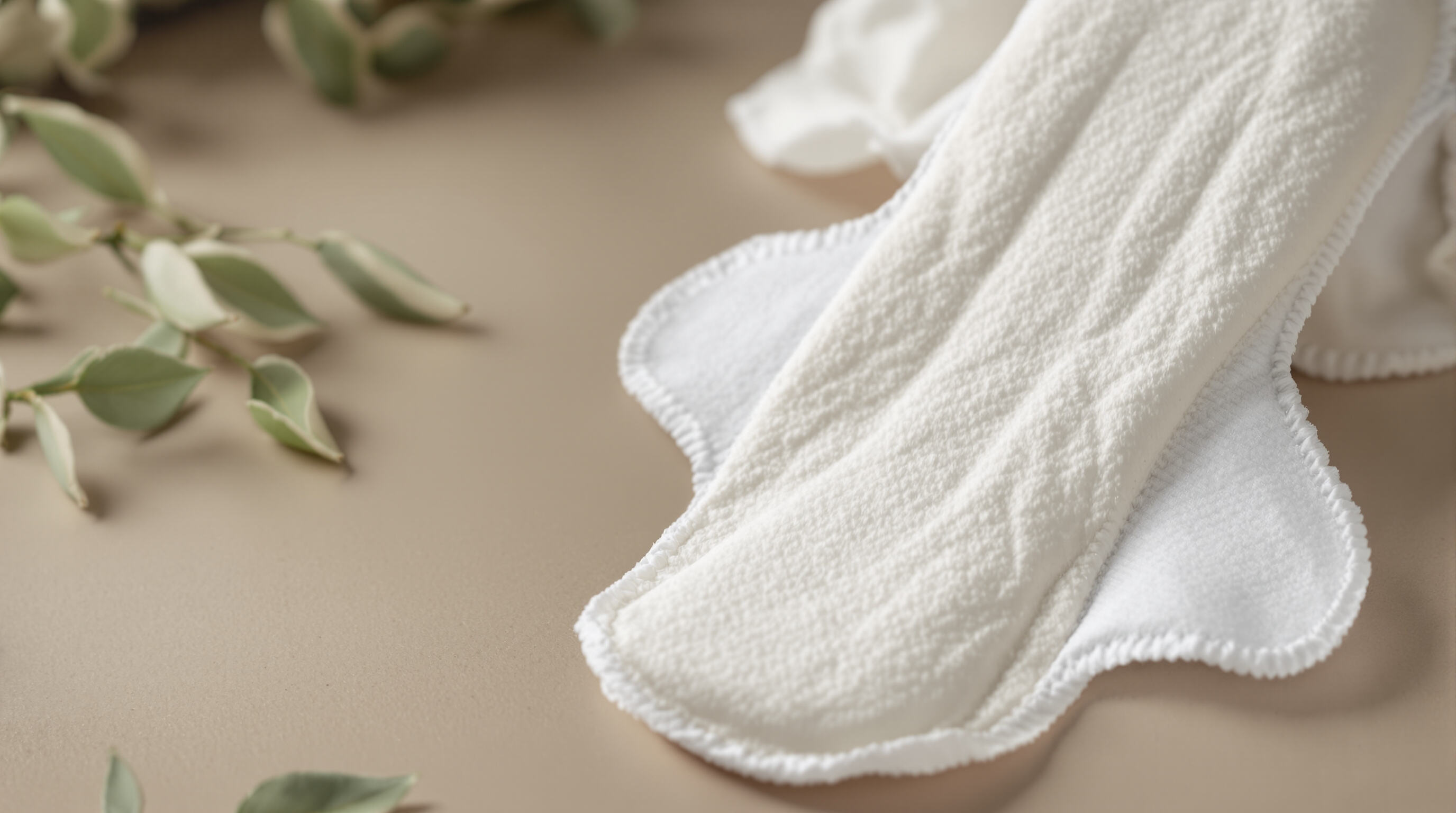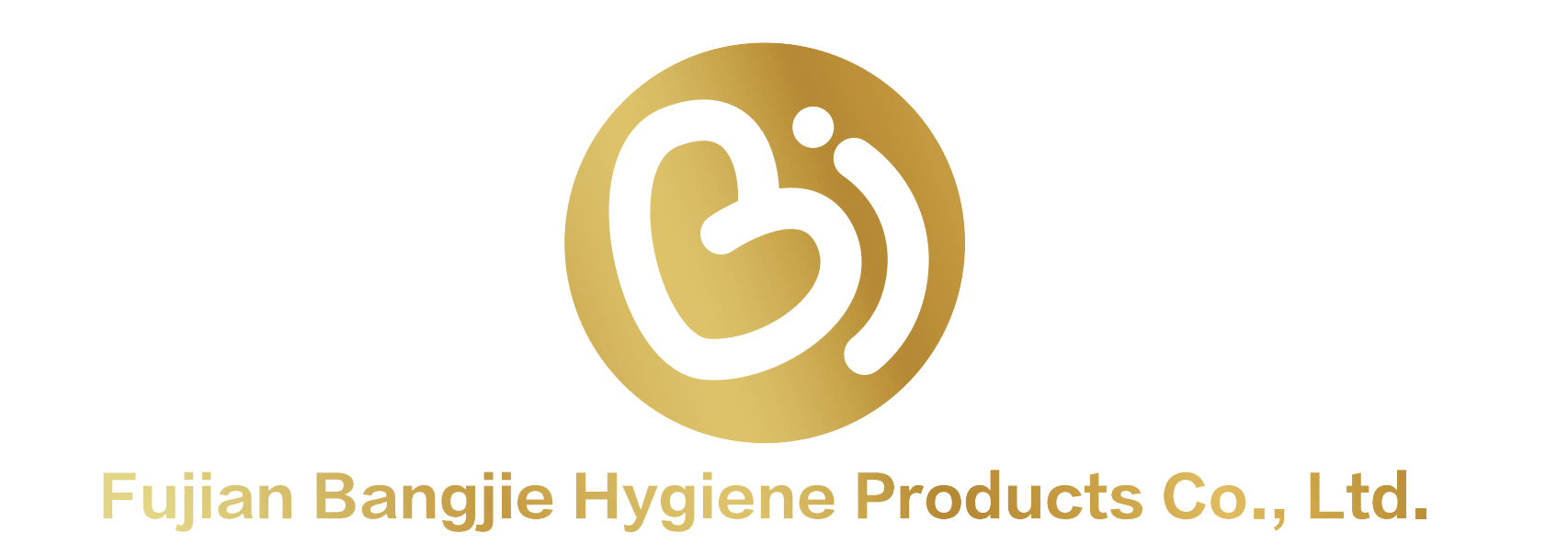ວິທີການຮັບປະກັນສິນຄ້າທາງສິ່ງແວດລ້ອມສໍາລັບຜ້າອ້ອນທີ່ມີປີກເພື່ອຈໍາຫນ່າຍໃນຕະຫຼາດ EU
CE Marking ແລະ ການນໍາໃຊ້ຂອງລະບຽບການ EU ວ່າດ້ວຍອຸປະກອນການແພດ (MDR) ສໍາລັບຜະລິດຕະພັນສຸຂະອະນາໄມດູດຊືມ
ຜ້າອ້ອນທີ່ມີປີກຖືກອອກແບບມາເພື່ອໃຊ້ໃນການມາປະຈໍາເດືອນ ຖືກຈັດຢູ່ໃນອຸປະກອນການແພດຊັ້ນ I ຕາມລະບຽບການອຸປະກອນການແພດຂອງ EU (MDR) 2017/745. ຖ້າບໍລິສັດຕ້ອງການໃຫ້ຜະລິດຕະພັນຂອງຕົນມີເຄື່ອງໝາຍ CE, ພວກເຂົາຕ້ອງສ້າງລະບົບການຄຸ້ມຄອງຄຸນນະພາບໃຫ້ຖືກຕ້ອງຕາມມາດຕະຖານ ISO 13485. ພວກເຂົາຍັງຕ້ອງກຽມເອກກະສານດ້ານວິຊາການໃຫ້ລະອຽດເພື່ອສະແດງໃຫ້ເຫັນວ່າຜະລິດຕະພັນຂອງພວກເຂົາມີຄວາມປອດໄພ ແລະ ດຳເນີນງານໄດ້ຖືກຕ້ອງ. ເອກະສານສຳຄັນທີ່ຕ້ອງການລວມມີການທົດສອບກ່ຽວກັບການປະຕິກິລິຍາຂອງວັດສະດຸກັບຮ່າງກາຍ. ການທົດສອບເຫຼົ່ານີ້ຕ້ອງປະຕິບັດຕາມຄຳແນະນຳທີ່ກຳນົດໄວ້ເຊັ່ນ ISO 10993-5 ສຳລັບການກຳນົດຄວາມເປັນພິດຕໍ່ເຊື້ອໂລມະ (cytotoxicity) ແລະ ISO 10993-10 ສຳລັບການກຳນົດຄວາມເປັນໄປໄດ້ທີ່ຈະເກີດການແພ້ (irritation potential). ຜູ້ຜະລິດຕ້ອງກຳນົດຄວາມສາມາດໃນການດູດຊືມໄດ້ຕາມວິທີມາດຕະຖານເຊັ່ນດຽວກັນກັບທີ່ກຳນົດໄວ້ໃນ EDANA WSP 341.1. ພ້ອມທັງຢ່າລືມກ່ຽວກັບສິ່ງທີ່ເກີດຂຶ້ນຫຼັງຈາກຜະລິດຕະພັນອອກສູ່ຕະຫຼາດ. ຕ້ອງມີແຜນການຈະແຈ້ງໃນການຕິດຕາມກວດກາບັນຫາຕ່າງໆ ແລະ ລາຍງານໃນເວລາທີ່ຈຳເປັນ.
ການປະຕິບັດຕາມຄວາມປອດໄພດ້ານເຄມີ ໃຕ້ຂໍ້ກຳນົດ REACH ແລະ CLP: ການຄຸ້ມຄອງສານທີ່ເປັນຂໍ້ກັງວົນ

ໃນມື້ນີ້, ຜູ້ຜະລິດຈຳເປັນຕ້ອງປະຕິບັດຕາມຂໍ້ກຳນົດ REACH ຂອງ EU, ເນື່ອງຈາກວ່າຂໍ້ກຳນົດດັ່ງກ່າວກຳລັງຈຳກັດສານຫຼາຍກ່ວາ 224 ສານທີ່ຖືກພິຈາລະນາວ່າເປັນອັນຕະລາຍຫຼາຍ (ເຊິ່ງເອີ້ນວ່າ SVHCs). ຂໍ້ຈຳກັດທີ່ສຳຄັນບາງຢ່າງເປົ້າຫມາຍໄປທີ່ສານເคมີຂອງທົ່ວໄປເຊັ່ນ: DEHP, ສານປະເພດ phthalate ທີ່ສາມາດມີຢູ່ໄດ້ພຽງ 0.1% ໂດຍນ້ຳໜັກໃນຜະລິດຕະພັນ. ຍັງມີຂໍ້ກຳນົດຕໍ່ຕ້ານ VOCs ເຊັ່ນ: toluene ທີ່ສ້າງຄວາມສ່ຽງຕໍ່ສຸຂະພາບ. ໃນກໍລະນີຂອງຂໍ້ກຳນົດ CLP, ທຸລະກິດຈະຕ້ອງດຳເນີນການກວດສອບຢ່າງລະອອຍຕໍ່ວັດຖຸດິບທີ່ໃຊ້ທັງໝົດ. ພວກເຂົາຕ້ອງດຳເນີນການທົດສອບໂດຍສະເພາະເພື່ອຊອກຫາສານອັນຕະລາຍເຊັ່ນ: formaldehyde ແລະຮັກສາລະດັບໃຫ້ຕ່ຳກ່ວາ 75 ສ່ວນຕໍ່ລ້ານໂດຍໃຊ້ວິທີການເຊັ່ນ: HPLC-UV analysis. ສູດສ່ວນປະສົມຂອງກາວຍັງມັກຈະຕ້ອງມີການປັບປຸງທັງໝົດເຊັ່ນກັນ, ເນື່ອງຈາກວ່າສານປະກອບຫຼາຍຢ່າງມັກຈະປະກອບມີສານທີ່ຖືກຫ້າມເຊັ່ນ: alkylphenol ethoxylates. ຕົວຈິງແລ້ວ, ອົງການເຄມີພິເສດຂອງເອີຣົບໄດ້ດຳເນີນການກວດກາໃນປີ 2023 ແລະພົບວ່າສິນຄ້າດ້ານສຸຂະອະນາໄມປະມານ 1 ໃນ 8 ຢູ່ໃນຕະຫຼາດມີເນື້ອໃນ SVHC ຫຼາຍເກີນໄປ. ສິ່ງນີ້ໄດ້ເຮັດໃຫ້ມີຄ່າປັບໃໝ້ຫຼວງຫຼາຍເຊິ່ງລວມເປັນເງິນເກືອບຫ້າລ້ານຍູໂຣຕໍ່ບໍລິສັດຕ່າງໆ.
ການປະເມີນຄວາມສ່ຽງຂອງໄດອິກຊິນ, ຟທາເລດ, ແລະ VOCs ໃນຜ້າອ້ອນປີກ
ເພື່ອຫຼຸດຜ່ອນຄວາມສ່ຽງຕໍ່ສຸຂະພາບ, ການຄວບຄຸມທີ່ເປັນເປົ້າໝາຍຈຳເປັນຕ້ອງມີສຳລັບມົນລະພິດທີ່ສຳຄັນ:
| ສິ່ງຈິງ | ບັນດາbcrypt | ຂອບເຂດສູງສຸດ | ວິທີການທົດສອບ |
|---|---|---|---|
| ໄດອິກຊິນ | ເສັ້ນໃຍເຈລັກຊີນ | 1.0 pg/g TEQ | EPA 1613B (HRGC/HRMS) |
| ຟທາເລດ | ຊັ້ນຫຼັງພລາສຕິກ | 0.1% (REACH) | EN 14372 (GC-MS) |
| VOCs | ກາວ/ໜ່ວຍພິມ | 50 µg/m³ | ISO 16000-6 (ການທົດສອບໃນຫ້ອງທົດລອງ) |
ຫ້ອງທົດລອງທາງເອກະລາດແນະນຳໃຫ້ທົດສອບຕົວຢ່າງທຸກ 3 ເດືອນ, ໂດຍສະເພາະສຳລັບ dioxins ທີ່ມາຈາກເສັ້ນໃຍທີ່ບໍ່ໄດ້ຮັບການຢັ້ງຢືນຈາກ FSC. ແນວໂນ້ມໃນການຄວບຄຸມທາງດ້ານກົດໝາຍທີ່ເກີດຂຶ້ນໃໝ່, ລວມທັງການປັບປຸງແກ້ໄຂຂອງຄຳສັ່ງວ່າດ້ວຍຄວາມປອດໄພຂອງຂອງຫຼິ້ນ EU (2023/1464), ສະແດງໃຫ້ເຫັນເຖິງການປັບຕົວໃນອະນາຄົດກ່ຽວກັບຂໍ້ຈຳກັດຕໍ່ຕ້ານສານເຊິ່ງລົບກວນຕໍ່ລະບົບເອນໄດ້ຂອງຜະລິດຕະພັນໃນປະເພດການດູແລສ່ວນຕົວ ແລະ ສຸຂາພິບານ.
ມາດຕະຖານສຳຄັນໃນການຢັ້ງຢືນສິ່ງແວດລ້ອມສຳລັບຜ້າອ້ອນທີ່ຍືນຍົງທີ່ມີປີກໃນເຂດ EU
ມາດຕະຖານຂອງສະຫະພາບເອີຣົບ (EU Ecolabel) ສຳລັບຜະລິດຕະພັນສຸຂາພິບານທີ່ສາມາດແຍກສลายໄດ້ ແລະ ສົ່ງຜົນກະທົບຕໍ່າຕໍ່ສິ່ງແວດລ້ອມ
EU Ecolabel ກຳນົດຂໍ້ກຳນົດທີ່ເຂັ້ມງວດໃນການຍືນຍົງ, ກຳນົດໃຫ້ ຜ້າອະນາໄມປີກ ມີສ່ວນປະກອບທີ່ເປັນອິນຊີ້ຢ່າງໜ້ອຍ 80% ໃນຊັ້ນດູດຊຶມ ແລະ ນຳໃຊ້ກາວທີ່ບໍ່ມີສານພາດສະຕິກ. ຜະລິດຕະພັນຕ້ອງສາມາດແຍກສลายໄດ້ພາຍໃນ 90 ວັນໃນເງື່ອນໄຂການຍ່ອຍສະຫຼາຍໃນອຸດສາຫະກຳ (ISO 14855), ມີລະດັບສານ formaldehyde ຕ່ຳກ່ວາ 75 ppm ແລະ ລວມປະລິມານສານ VOC ຕ່ຳກ່ວາ 5 mg/m³.
ການຢັ້ງຢືນ Cradle to Cradle: ສົ່ງເສີມສຸຂະພາບຂອງວັດຖຸດິບ ແລະ ການຍືນຍົງໃນວົງຈອນ
ມາດຕະຖານນີ້ເນັ້ນຫນັກໃນດ້ານຄວາມປອດໄພດ້ານເຄມີແລະການຍົກສູງການນຳໃຊ້ຊ້ຳ, ກຳນົດໃຫ້ໃຊ້ກາວແລະສີທີ່ບໍ່ມີສານເຟໂທເາລີນ (phthalate-free), ວັດສະດຸປິດທ້າຍ (backsheet) ທີ່ສາມາດນຳກັບມາໃຊ້ໃໝ່ໄດ້ 100% ຫຼື ວັດສະດຸທີ່ສາມາດຍ່ອຍສະຫຼາຍໄດ້ທາງຊີວະພາບ, ແລະ ຕ້ອງມີຫຼັກຖານວ່າຢ່າງໜ້ອຍ 95% ຂອງນ້ຳໜັກຜະລິດຕະພັນສາມາດນຳມາຮີໄຊເຄີ (recycled) ໃນລະບົບປິດ (closed-loop systems). ການບັນລຸມາດຕະຖານລະດັບທອງ (Gold-level certification) ມັກຈະກ່ຽວຂ້ອງກັບການປັບປຸງໂປລີເມີ້ທີ່ດູດຊຶມສູງ (superabsorbent polymers - SAP) ດ້ວຍວັດສະດຸທາງເລືອກທີ່ເຮັດຈາກເຊລູໂລສ (cellulose-based alternatives).
ມາດຕະຖານ FSC ແລະ PEFC ສຳລັບການສະໜອງເສັ້ນໃຍຢ່າງຍືນຍົງໃນຊັ້ນດູດຊຶມ
ສະພາຄອບຄົວປ່າໄມ້ (Forest Stewardship Council - FSC) ແລະ ໂຄງການຮັບຮອງມາດຕະຖານປ່າໄມ້ (Programme for the Endorsement of Forest Certification - PEFC) ຮັບປະກັນວ່າເນື້ອເຈ້ຍມາຈາກປ່າໄມ້ທີ່ຄຸ້ມຄອງຢ່າງຮັບຜິດຊອບ. ຜູ້ສະໜອງທີ່ໄດ້ຮັບມາດຕະຖານຕ້ອງຮັກສາເອກະສານການຕິດຕາມທາງດ້ານການຄ້າ (chain-of-custody), ຈຳກັດການຟອກດ້ວຍຄລໍຣີນໃຫ້ໜ້ອຍກ່ວາ 10% ຂອງຂະບວນການຜະລິດ, ແລະ ຫຼຸດການໃຊ້ນ້ຳຢ່າງໜ້ອຍ 70% ເມື່ອທຽບກັບຂະບວນການດັ້ງເດີມ.
ການປຽບທຽບມາດຕະຖານດ້ານສິ່ງແວດລ້ອມຊັ້ນນຳ: ມາດຕະຖານສິ່ງແວດລ້ອມຂອງສະຫະພາບເອີຣົບ (EU Ecolabel), ຫົວເຂົ້າແຫ່ງເອເຊຍເໜືອ (Nordic Swan), ແລະ Der Blaue Engel
| ຄະແນນສະພາບ | EU Ecolabel | ຫົວເຂົ້າແຫ່ງເອເຊຍເໜືອ (Nordic Swan) | Der Blaue Engel |
|---|---|---|---|
| ຄວາມສາມາດທໍາລາຍທາງຊີວະພາບ | ມາດຕະຖານ 90 ວັນ | ມາດຕະຖານ 120 ວັນ | ບໍ່ຕ້ອງການ |
| ຂອບເຂດ VOC | 5 mg/m³ | 8 mg/m³ | 10 mg/m³ |
| ເນື້ອໃນທີ່ສາມາດຕໍ່ມື້ໄດ້ | ຢ່າງໜ້ອຍ 80% | ຢ່າງໜ້ອຍ 65% | ຢ່າງໜ້ອຍ 50% |
ໃນຂະນະທີ່ Nordic Swan ເນັ້ນເລື່ອງຄວາມເປັນກາງດ້ານກາກບອນໃນການຈັດສົ່ງ, Der Blaue Engel ຈະເນັ້ນເລື່ອງເນື້ອໃນທີ່ນຳມາໃຊ້ຄືນໃໝ່ຫຼາຍກ່ວາເວລາທີ່ຍ່ອຍສະຫຼາຍໄດ້.
ການປະເມີນຄວາມປອດໄພດ້ານເຄມີແລະການທົດສອບຂັ້ນຕອນຕາມລະບຽບການ
ຜູ້ຜະລິດຈຳເປັນຕ້ອງປະຕິບັດຕາມບໍລິບົດທາງດ້ານຄວາມປອດໄພຂອງເຄມີຢ່າງເຂັ້ມງວດເພື່ອໃຫ້ເຂົ້າກັບມາດຕະຖານຄວາມສອດຄ່ອງຂອງສະຫະພາບເອີຣົບ (EU). ການວິເຄາະອຸດສະຫະກຳປີ 2023 ພົບວ່າຜະລິດຕະພັນດູແລສ່ວນບຸກຄົນທີ່ບໍ່ສອດຄ່ອງ 68% ລົ້ມເຫຼວຍ້ອນເນື້ອໃນເອກະສານບໍ່ພຽງພໍ, ສະແດງໃຫ້ເຫັນເຖິງຄວາມສຳຄັນຂອງການປະເມີນຜົນຢ່າງເປັນລະບົບ.
ການປະເມີນຄວາມສ່ຽງດ້ານພິດສາດສຳລັບຄວາມປອດໄພຂອງຜະລິດຕະພັນດູແລແມ່ຍິງ
ຕາມ REACH ເອກະສານຊື່ XVII, ຜູ້ຜະລິດຈຳເປັນຕ້ອງດຳເນີນການປະເມີນດ້ານພິດສາດຢ່າງຄົບຖ້ວນຂອງວັດສະດຸຊືມ, ມຸ້ງເນັ້ນການສຳຜັດຜ່ານຜິວໜັງກັບສານກໍາຈັດມະເຮັງ (≤0.01% ສ່ວນຮ້ອຍຂອງຄວາມເຂັ້ມຂຸ້ນ) ແລະ ສານພິດທີ່ສົ່ງຜົນຕໍ່ການສືບພັນ (≤0.1%). ອັດຕາການແພ່ຂອງສານເພີ່ມຄວາມຍືດຢຸ່ນເຊັ່ນ DEHP ຈຳເປັນຕ້ອງຖືກບັນທຶກໃນລະດັບຕໍ່າກວ່າ 0.03 µg/cm²/ອາທິດ, ຕາມມາດຕະຖານການທົດສອບການດູດຊືມຂອງຜິວໜັງ OECD 428.
ວິທີການທົດສອບວິເຄາະເພື່ອກຳນົດສານປົນເປື້ອນໃນຊັ້ນຊືມ
ຫ້ອງທົດສອບພາກສ່ວນທີສາມໃຊ້ຂະບວນການຢືນຢັນສາມຂັ້ນຕອນ:
- ການกรอง : Headspace GC-MS ສຳລັບການກຳນົດ VOC (ຄວາມລະອອຍ: 0.01 ppm)
- ການວັດແທກ : HPLC-UV ສຳລັບການວັດແທກຟທາເລດ (LOQ: 0.005%)
- ການວິເຄາະຢືນຢັນ : LC-QTOF ສຳລັບການບັນຍາຍສານທີ່ບໍ່ມີເປົ້າໝາຍ
ວິທີການເຫຼົ່ານີ້ຕ້ອງໄດ້ຮັບການປະຕິບັດຕາມມາດຕະຖານ ISO 10993-18:2023 ສຳລັບຜະລິດຕະພັນທີ່ອອກແບບມາໃຊ້ສຳຜັດຜິວໜັງໃນໄລຍະຍາວ (ຫຼາຍກ່ວາ 24 ຊົ່ວໂມງ).
ກໍລະນີສຶກສາ: ການເອີ້ນຄືນຜະລິດຕະພັນໃນຕະຫຼາດເນື່ອງຈາກ VOC ແລະ Phthalate ເກີນຂອບເຂດໃນຜ້າອ້ອນ
ໃນປີ 2022 ທີ່ຜ່ານມາ, ມີການເອີ້ນຄືນຜະລິດຕະພັນໃນຂະແໜງ EU ທີ່ສົ່ງຜົນກະທົບເຖິງ 2.7 ລ້ານຜະລິດຕະພັນເມື່ອຜົນການທົດສອບພົບວ່າມີລະດັບ diisobutyl phthalate (DIBP) ສູງເຖິງ 0.18%, ເຊິ່ງສູງກ່ວາຂອບເຂດທີ່ອະນຸຍາດໃນຂໍ້ກຳນົດ MDR ເຖິງ 6 ເທົ່າ. ບໍລິສັດທີ່ຢູ່ເບື້ອງຫຼັງຜະລິດຕະພັນເຫຼົ່ານີ້ຕ້ອງໃຊ້ເງິນຫຼາຍກ່ວາ 1.2 ລ້ານຍູໂຣໃນການແກ້ໄຂບັນຫາດັ່ງກ່າວ ແລະ ບໍ່ສາມາດນຳເອົາຜະລິດຕະພັນກັບຄືນສູ່ຮ້ານຄ້າໄດ້ເຖິງ 14 ເດືອນຕິດຕໍ່ກັນ. ຖ້າເບິ່ງຂໍ້ມູນຈາກບົດລາຍງານປະຈຳປີ 2023 Chemical Compliance Cost-Benefit ຈະເຫັນໄດ້ຢ່າງຈະແຈ້ງວ່າ: ບໍລິສັດທີ່ລົງທຶນໃນການກວດສອບຄຸນນະພາບໃນຂັ້ນຕອນເບື້ອງຕົ້ນຈະພົບບັນຫາຕ່າງໆໜ້ອຍລົງໃນໄລຍະຍາວ. ບົດລາຍງານດັ່ງກ່າວຍັງໄດ້ສະແດງໃຫ້ເຫັນວ່າ, ການປ້ອງກັນແບບເຂັ້ມງວດສາມາດຫຼຸດຜ່ອນຄວາມສ່ຽງຂອງການເອີ້ນຄືນຜະລິດຕະພັນລົງໄດ້ເຖິງ 83% ເມື່ອທຽບກັບການລໍຖ້າຈົນເກີດບັນຫາກ່ອນຈະແກ້ໄຂ.
ການປະດິດສ້າງວັດຖຸດິບທີ່ຍືນຍົງໃນຜ້າອ້ອນທີ່ສາມາດຍ່ອຍສະຫຼາຍໄດ້ທາງຊີວະພາບທີ່ມີປີກ

ໂພລີເມີຊີວະພາບທີ່ເຮັດມາຈາກພືດເປັນທາງເລືອກແທນພາດສະຕິກໃນການຜະລິດປີກ ແລະ ຜ້າອ້ອນດ້ານຫຼັງ
ບາງບໍລິສັດທີ່ຄິດໄລຍະຍາວໄດ້ເລີ່ມມີການປ່ຽນຜ້າອ້ອນດ້ານຫຼັງທີ່ເຮັດມາຈາກໂພລີເອທີລີນ ແທນດ້ວຍສິ່ງທີ່ເອີ້ນວ່າ ໂພລີແລັກຕິກ ອາຊິດ (PLA) ທີ່ມາຈາກເຊື້ອສານຂ້າວພອດ. ຂ່າວດີກໍຄືວ່າວັດຖຸດິບຊີວະພາບເຫຼົ່ານີ້ສາມາດຍ່ອຍສະຫຼາຍໄດ້ທັງໝົດພາຍໃນ 12 ອາທິດ ເມື່ອຖືກນຳໄປສູ່ລະບົບຍ່ອຍສະຫຼາຍໃນຂະແໜງອຸດສາຫະກຳ. ນັ້ນແມ່ນຄວາມແຕກຕ່າງທີ່ໃຫຍ່ຫຼວງເມື່ອທຽບກັບພາດສະຕິກທົ່ວໄປທີ່ຕ້ອງໃຊ້ເວລາປະມານ 500 ປີໃນການຍ່ອຍສະຫຼາຍ. ນັກຄົ້ນຄວ້າຍັງກຳລັງທົດລອງກັບວັດຖຸດິບປະສົມໃໝ່ທີ່ເຮັດມາຈາກເສັ້ນໃຍກ້ວຍປະສົມກັບເສັ້ນໃຍຫຍ້າບົ້ງ. ການປະສົມເຫຼົ່ານີ້ໃຫ້ການປ້ອງກັນການຮົ່ວໄຫຼທີ່ດີເລີດ ແລະ ຍັງສາມາດຫຼຸດຜ່ອນການປ່ອຍອາຍພິດຄາບອນໄດອິກໄຊ້ (CO2) ໄດ້ຫຼາຍກ່ວາ 35% ເມື່ອທຽບກັບທາງເລືອກສັງເຄາະທົ່ວໄປຕາມການສຶກສາທີ່ຜູ້ປະເສີດໃນວາລະສານ Biomaterials ໃນປີກາຍ.
ກາວທີ່ສາມາດຍ່ອຍສະຫຼາຍໄດ້ ແລະ ເຕັກໂນໂລຊີການປິດຜນຶກທີ່ຍືນຍົງ
ກາວທີ່ເຮັດມາຈາກສານເມືອກແລະເສັ້ນໃຍໃນປັດຈຸບັນສາມາດໃຫ້ການຍຶດຕິດປີກທີ່ເຊື່ອຖືໄດ້ໂດຍບໍ່ເຫຼືອຂອງເສຍທີ່ເປັນພິດ. ການທົດລອງພົບວ່າທາງເລືອກທີ່ສາມາດຍ່ອຍສະຫຼາຍໄດ້ເຫຼົ່ານີ້ສາມາດບັນລຸຄວາມເຂັ້ມແຂງຂອງການຕັດແຕ່ຢ່າງໜ້ອຍ 0.7 MPa - ເທົ່າທຽມກັບກາວທີ່ເຮັດມາຈາກນ້ຳມັນດິບ - ໃນຂະນະທີ່ເຂົ້າກັນກັບມາດຕະຖານ EN 13432 ສຳລັບການຍ່ອຍສະຫຼາຍໄດ້. ເທກໂນໂລຊີການປິດຜະນຶກດ້ວຍຄືນສຽງສູງຊ່ວຍຂຈັດການໃຊ້ກາວທັງໝົດ, ລວມທັງການປ່ອຍ VOC ໃນຂະນະການຜະລິດລົງ 62% (ວາລະສານວິສະວະກຳເສັ້ນໃຍ 2023).
ການປະເມີນອາຍຸການໃຊ້ງານ (LCA) ຂອງທາງເລືອກດ້ານວັດສະດຸໃນຜະລິດຕະພັນສຸຂະອະນາໄມຊົ່ວຄາວ
ການວິເຄາະແຕ່ເລີ່ມຕົ້ນຈົນສິ້ນສຸດຊີວິດຊີ້ໃຫ້ເຫັນເຖິງປະໂຫຍດດ້ານສິ່ງແວດລ້ອມຂອງວັດສະດຸທີ່ຍືນຍົງ:
| ການເລືອກເສັ້ນ | ກຳລັງປະຕິບັດສູນແຄບໂຄເຊນ | ການໃຊ້ນ້ຳ |
|---|---|---|
| ຊັ້ນຫຼັງ PLA | 48% | 22% |
| ເສັ້ນໃຍເຈົ້າພາບທີ່ໄດ້ຮັບການຢັ້ງຢືນ FSC | 31% | 41% |
| ກາວທີ່ເຮັດມາຈາກພືດ | 27% | 15% |
ການປະເມີນ LCA ທີ່ເປັນອິດສະຫຼະຢືນຢັນວ່າການຮັບເອົາແນວຄິດສ້າງສັນເຫຼົ່ານີ້ຢ່າງກ້ວາງຂວາງສາມາດຫັນເອົາຂยะຜະລິດຕະພັນທີ່ເປັນມະນະສະທິດໄດ້ 89% ຈາກຂະໜາດຂີ້ເຫຍື້ອຂອງ EU ໂດຍປີ 2030, ສະໜັບສະໜູນເປົ້າໝາຍດ້ານເສດຖະກິດວົນຂອງສົນທິສັນຍາສີຂຽວເອີຣົບ.
ການປະເມີນຜູ້ສະໜອງ OEM ສຳລັບຄວາມສອດຄ່ອງດ້ານສິ່ງແວດລ້ອມແລະຈັນຍາບັນ
ການກວດສອບຜູ້ຜະລິດສຳລັບມາດຕະຖານ ISO 14001 ແລະ SA8000
ຕົວເລກລ້າສຸດຈາກ EMSAudit ປີ 2023 ແຈ້ງວ່າ ປະມານສອງສ່ວນສາມຂອງບໍລິສັດທີ່ຜະລິດສິນຄ້າທາງສຸຂະອະນາໄມໄດ້ຮັບການຢັ້ງຢືນ ISO 14001 ສຳລັບການຄຸ້ມຄອງຜົນກະທົບຕໍ່ສິ່ງແວດລ້ອມ. ໃນຂະນະທີ່ກຳລັງກວດສອບຜູ້ສະໜອງ, ສິ່ງສຳຄັນແມ່ນຕ້ອງເບິ່ງວ່າພວກເຂົາໄດ້ຈັດຕັ້ງປະຕິບັດເປົ້າໝາຍສະເພາະໃນການຫຼຸດການໃຊ້ພະລັງງານ ແລະ ນ້ຳແທ້ບໍ່. ໃນຂະນະດຽວກັນ, ການກວດສອບເຫຼົ່ານີ້ຈະຕ້ອງຢັ້ງຢືນການປະຕິບັດຕາມມາດຕະຖານ SA8000 ທີ່ກ່ຽວຂ້ອງກັບບັນຫາຕ່າງໆເຊັ່ນ: ການຈ່າຍຄ່າຕອບແທນໃຫ້ແກ່ພະນັກງານຢ່າງຍຸດຕິທຳ ແລະ ການຮັບປະກັນຄວາມປອດໄພໃນສະຖານທີ່ເຮັດວຽກ. ນໜ້າສົນໃຈ, ບໍລິສັດທີ່ສາມາດໄດ້ຮັບການຢັ້ງຢືນພາຍໃຕ້ລະບົບທັງສອງມັກຈະມີບັນຫາໜ້ອຍລົງໃນການກວດພາຍໃນການກວດສອບເຄມີຂອງ EU ສຳລັບບັນດາບໍລິສັດອື່ນໆ. ຕາມຂໍ້ມູນຈາກ Social Accountability International ໃນປີກ່ອນ, ບໍລິສັດທີ່ໄດ້ຮັບການຢັ້ງຢືນສອງລະບົບພຽງແຕ່ມີບັນຫາການບໍ່ປະຕິບັດຕາມມາດຕະຖານຢ່າງປະມານ 28% ໜ້ອຍລົງ.
ການຮັບປະກັນຄວາມໂປ່ງໃສໃນຫາຍໃຈສາຍສະໜອງ ແລະ ການຕິດຕາມຊື້ວັດຖຸດິບ
ຕາມດັດຊະນີການເບິ່ງເຫັນຫາວຽງສາຍສະໜອງລຸ້ນປັບປຸງໃໝ່ສໍາລັບປີ 2024, ບໍລິສັດທີ່ກໍານົດຜູ້ສະໜອງຂັ້ນ 1 ແລະ ຂັ້ນ 2 ຂອງເຂົາເຈົ້າສາມາດແກ້ໄຂບັນຫາການເອີ້ນຄືນເນື່ອງຈາກມົນລະພິດໄດ້ໄວຂຶ້ນປະມານ 91% ທຽບກັບບໍລິສັດທີ່ບໍ່ໄດ້ກໍານົດ. ໃນມື້ນີ້, ເທກໂນໂລຊີ blockchain ເຮັດໃຫ້ເກີດການຕິດຕາມສິ່ງຂອງທຸກຢ່າງຈາກເສັ້ນໃຍທີ່ຮັບຮອງໂດຍ FSC ຫຼື PEFC ຈົນເຖິງກາວທີ່ບໍ່ມີ phthalate ໃນລະດັບລຸ້ນຜະລິດຕະພັນ. ບັນດາ OEM ທີ່ດີທີ່ສຸດໄປໄກກ່ວານັ້ນໂດຍການສໍາເລັດການກວດສອບອິດສະລະທຸກໆໄຕມາດຕໍ່ວັດຖຸດິບທັງໝົດຂອງເຂົາເຈົ້າ. ວິທີການນີ້ໄດ້ຫຼຸດລົງການລະເມີດຂໍ້ກໍານົດ REACH ໄດ້ເຖິງ 40% ຕາມທີ່ລະບຸໄວ້ໃນບົດລາຍງານຂອງແນວພັນຂອງສະຫະພາບເອີຣົບກ່ຽວກັບເຄື່ອງນຸ່ງຜ້າທີ່ຍືນຍົງໃນປີກາຍ. ຜູ້ຜະລິດຕ້ອງໃຫ້ຄວາມສົນໃຈຕໍ່ຕົວເລກເຫຼົ່ານີ້ເປັນຢ່າງໃດກໍຕາມຖ້າພວກເຂົາຕ້ອງການຮັກສາຄວາມຖືກຕ້ອງຕາມກົດລະບຽບໃນຂະນະທີ່ຄວບຄຸມຕົ້ນທຶນໃຫ້ຢູ່ໃນລະດັບທີ່ຄວບຄຸມໄດ້.
ຄໍາຖາມທີ່ຖືກຖາມເລື້ອຍໆ (FAQ)
ມາດຕະຖານໃດແດ່ທີ່ຕ້ອງການໃຫ້ຜ້າອ້ອມສຸຂະພາບໄດ້ຮັບເຄື່ອງໝາຍ CE?
ຜ້າອ້ອນຕ້ອງໄດ້ຮັບການຈັດປະເພດເປັນອຸປະກອນການແພດຊັ້ນ I ຕາມຂໍ້ກຳນົດວ່າດ້ວຍອຸປະກອນການແພດຂອງ EU (EU Medical Devices Regulation). ບໍລິສັດຈຳເປັນຕ້ອງສ້າງລະບົບການຄຸ້ມຄອງຄຸນນະພາບຕາມມາດຕະຖານ ISO 13485 ແລະ ຈັດທຳເອກະສານດ້ານວິຊາການທີ່ສະແດງໃຫ້ເຫັນຄວາມປອດໄພ ແລະ ປະສິດທິຜົນຂອງຜະລິດຕະພັນ.
ຂໍ້ກຳນົດ REACH ສົ່ງຜົນກະທົບຕໍ່ຜູ້ຜະລິດຜ້າອ້ອນແນວໃດ?
ຂໍ້ກຳນົດ REACH ຈຳກັດການມີຢູ່ຂອງສານອັນຕະລາຍຫຼາຍກວ່າ 224 ສານ, ລວມທັງ SVHCs. ຜູ້ຜະລິດຈຳເປັນຕ້ອງຮັບປະກັນວ່າຜະລິດຕະພັນຂອງເຂົາເຈົ້າເຂົ້າໃຈກັບຂໍ້ຈຳກັດສະເພາະຂອງແຕ່ລະສານ ແລະ ດຳເນີນການທົດສອບເພື່ອຮັບປະກັນຄວາມປອດໄພດ້ານເຄມີ.
ມາດຕະຖານການຢັ້ງຢືນດ້ານສິ່ງແວດລ້ອມໃດແດ່ທີ່ສາມາດນຳໃຊ້ກັບຜ້າອ້ອນມີປີກໃນເຂດ EU?
ມາດຕະຖານສຳຄັນລວມມີ EU Ecolabel, ການຢັ້ງຢືນ Cradle to Cradle, ການຢັ້ງຢືນ FSC ແລະ PEFC, ແລະ ການປຽບທຽບລະຫວ່າງສັນຍາລັກດ້ານສິ່ງແວດລ້ອມຕ່າງໆເຊັ່ນ Nordic Swan ແລະ Der Blaue Engel.
ວັດຖຸດິບທີ່ຍືນຍົງຖືກນຳໃຊ້ໃນຜ້າອ້ອນແບບໃດ?
ການນະວັດຕະກໍາທີ່ຍືນຍົງປະກອບມີການນໍາໃຊ້ຊີວະພາດຖະຫຼາຍທີ່ເຮັດມາຈາກພືດ, ກາວທີ່ສາມາດຍ່ອຍສະຫຼາຍໄດ້, ການປິດຜນຶກດ້ວຍຄວາມຖີ່ສຽງ, ແລະ ການປະເມີນຕະຫຼອດຫຼັກຊີວິດເພື່ອປະເມີນຜົນກະທົບຕໍ່ສິ່ງແວດລ້ອມ ແລະ ສົ່ງເສີມໃຫ້ສາມາດຍ່ອຍສະຫຼາຍໄດ້ໂດຍທໍາມະຊາດ.


